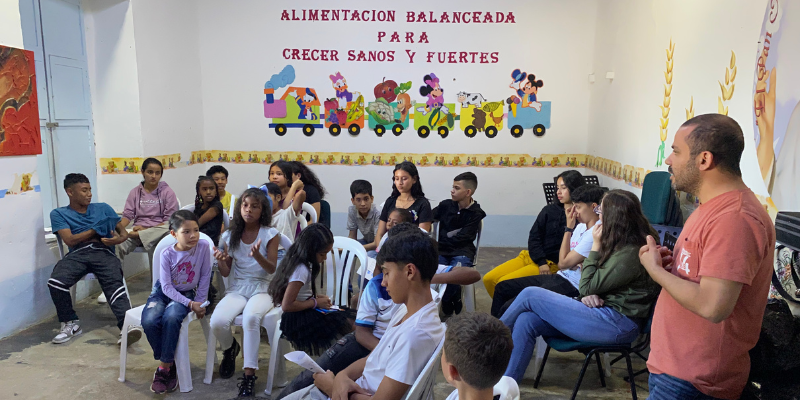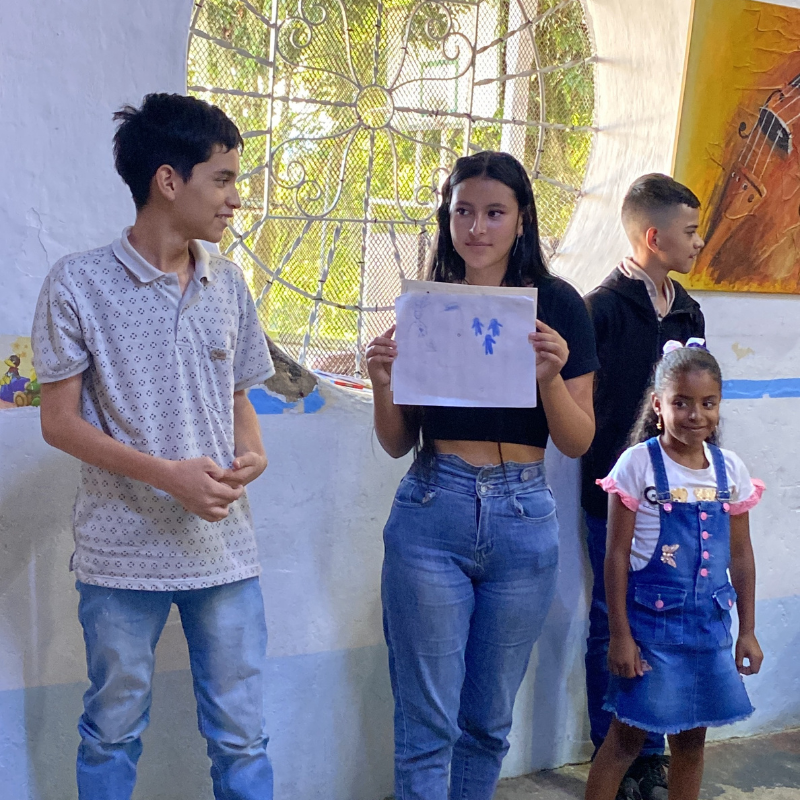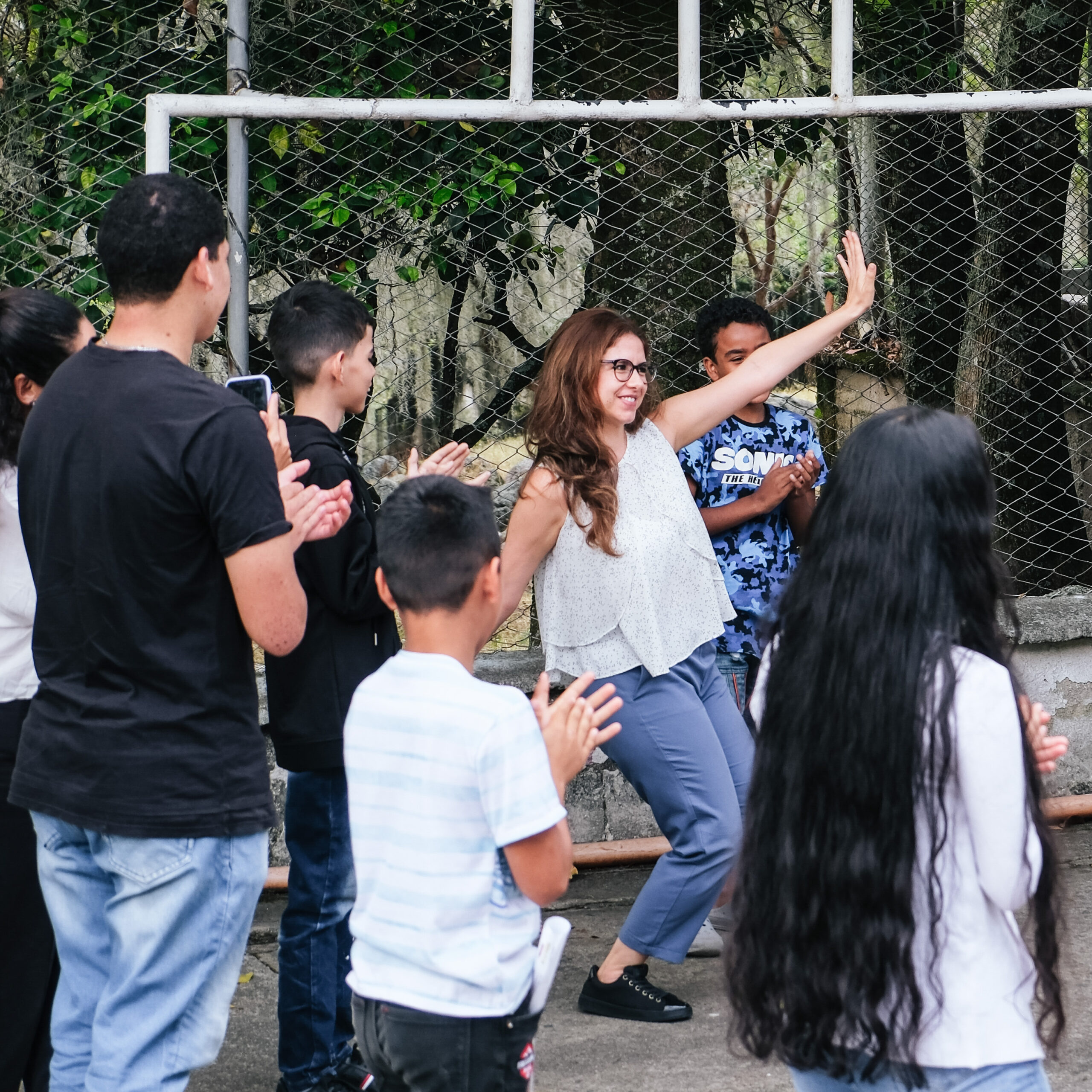Armonía: a new vision of youth leadership
Leadership from within, through daily actions in our communities
Armonía: a new vision of youth leadership
Leadership from within, through daily actions in our communities
Because leadership happens in everyday choices
From local initiatives to global platforms, young leaders are being invited to shape our world. But while these efforts are crucial, we need to remember that youth leadership is not limited to big actions in public settings. It also happens in everyday moments: in the way of relating to others, the resilience amidst challenges, and the ability to inspire by example.
Because leadership happens in everyday choices
From local initiatives to global platforms, young leaders are being invited to shape our world. But while these efforts are crucial, we need to remember that youth leadership is not limited to big actions in public settings. It also happens in everyday moments: in the way of relating to others, the resilience amidst challenges, and the ability to inspire by example.
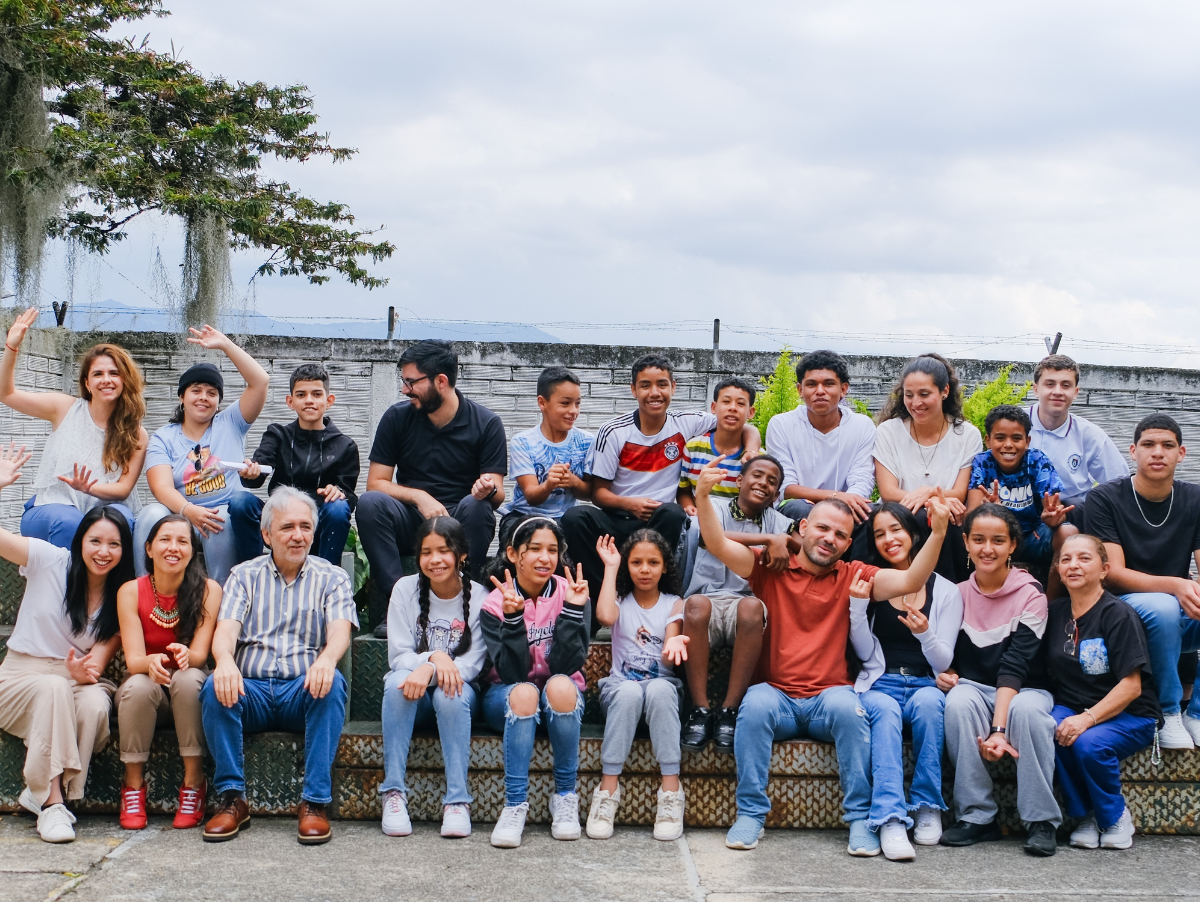
Introducing Armonía
We see the need for a shift to a deeply-rooted and community-centered vision of youth leadership: from high-profile efforts to helping young people develop the internal processes to navigate daily life in an open, curious and kind way.
That’s why, in collaboration with our partner, Amadeus, we’ve co-created a model that expands leadership into a journey of becoming – a daily choice grounded in values and community.
Rooted in Bello, Colombia
Together with Amadeus, a locally-led social change organization that integrates music and socio-emotional learning for youth development, we’re learning from the perspectives and realities of young people in Bello, a municipality outside of Medellín.
Amadeus envisions youth flourishing as a holistic journey that extends beyond personal growth only; it’s also about the capacity to inspire and mentor others, creating a ripple effect of well-being and leadership in high-risk areas.
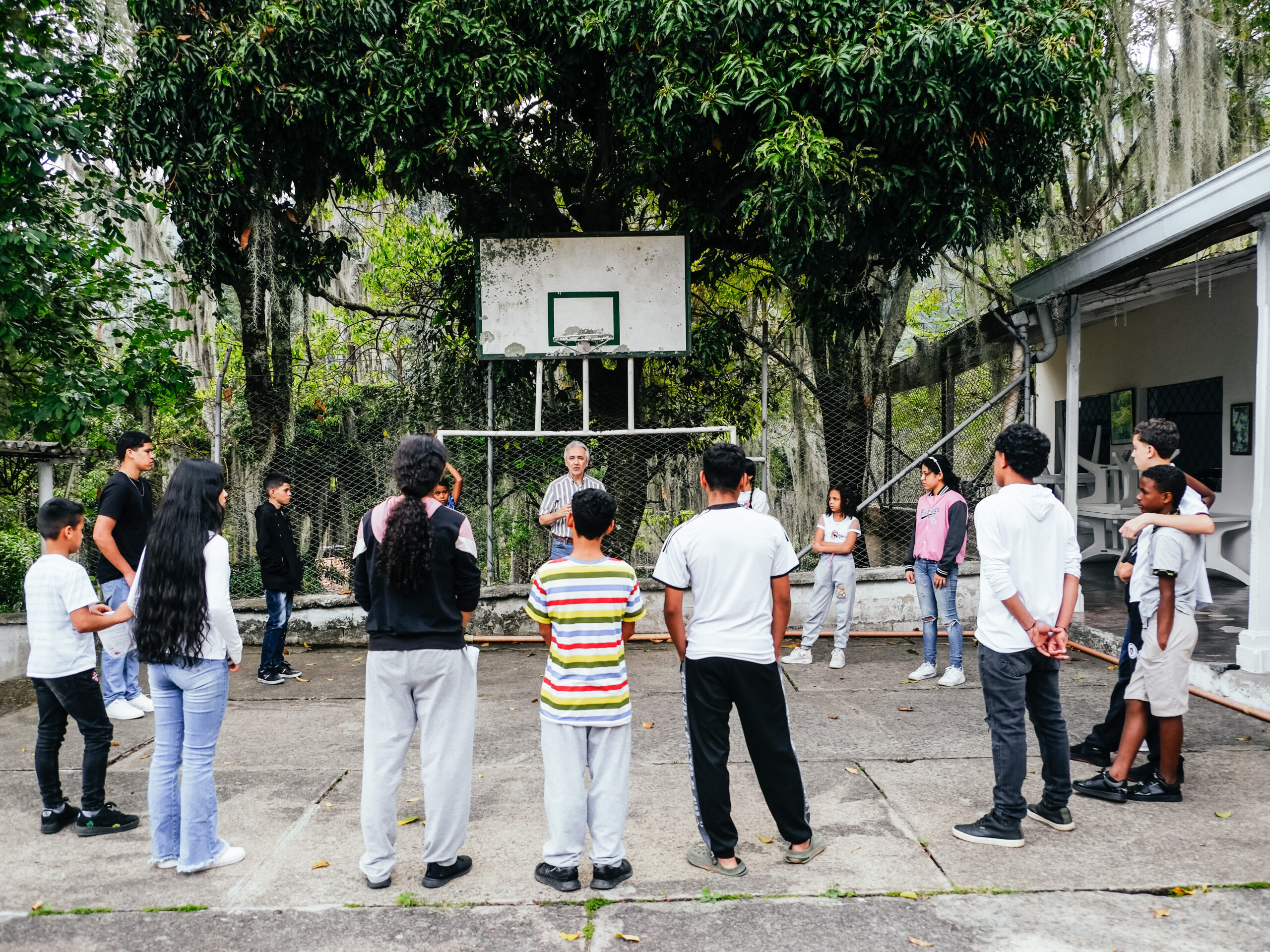
Introducing Armonía

We see the need for a shift to a deeply-rooted and community-centered vision of youth leadership: from high-profile efforts to helping young people develop the internal processes to navigate daily life in an open, curious and kind way.
That’s why, in collaboration with our partner, Amadeus, we’ve co-created a model that expands leadership into a journey of becoming – a daily choice grounded in values and community.
Rooted in Bello, Colombia

Together with Amadeus, a locally-led social change organization that integrates music and socio-emotional learning for youth development, we’re learning from the perspectives and realities of young people in Bello, a municipality outside of Medellín.
Amadeus envisions youth flourishing as a holistic journey that extends beyond personal growth only; it’s also about the capacity to inspire and mentor others, creating a ripple effect of well-being and leadership in high-risk areas.
How does it work?
Through education, access to dignified work opportunities, and the strengthening of emotional wellbeing, Amadeus participants develop tools to lead their lives with purpose, resilience, and a sense of community.
Activism is just one facet
The leadership style they are developing is deeply rooted in the community, which involves being a role model in everyday life, starting with oneself, fostering a supportive community, and creating sustainable change from within.
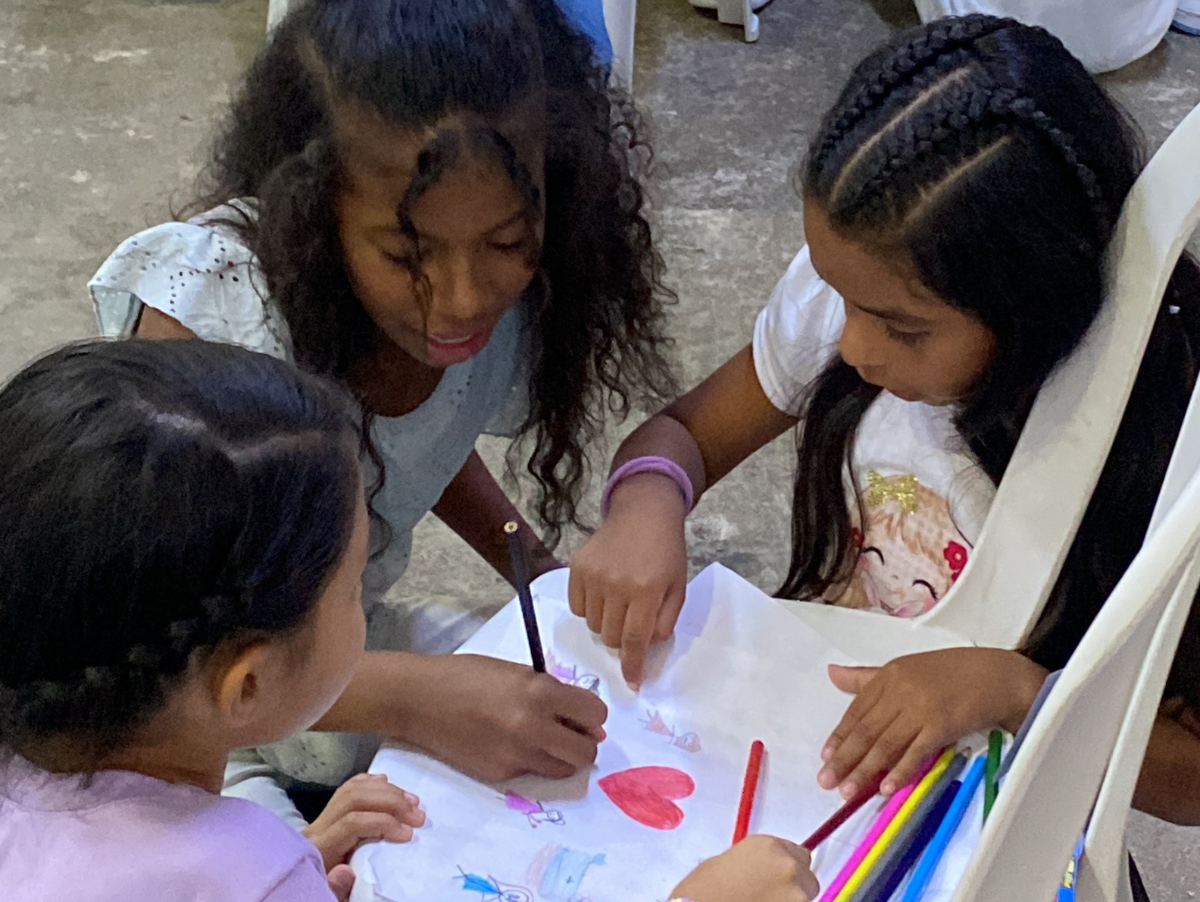
Leadership from within
In difficult circumstances, leadership begins with developing a more compassionate approach to their identity, internalizing helpful habits, and leveraging their creativity to design their own futures with the purpose of contributing to the society – regardless of the trade or profession they pursue.
A daily choice
Whether they are organizing a demonstration, caring for their neighbor’s kids, attending a council meeting, or offering help in the wake of a crisis, the way a young leader shows up to these spaces reflects their internal response. The good news is that leadership is not only an identity or a collection of buzzwords but also a daily choice – a journey of becoming.
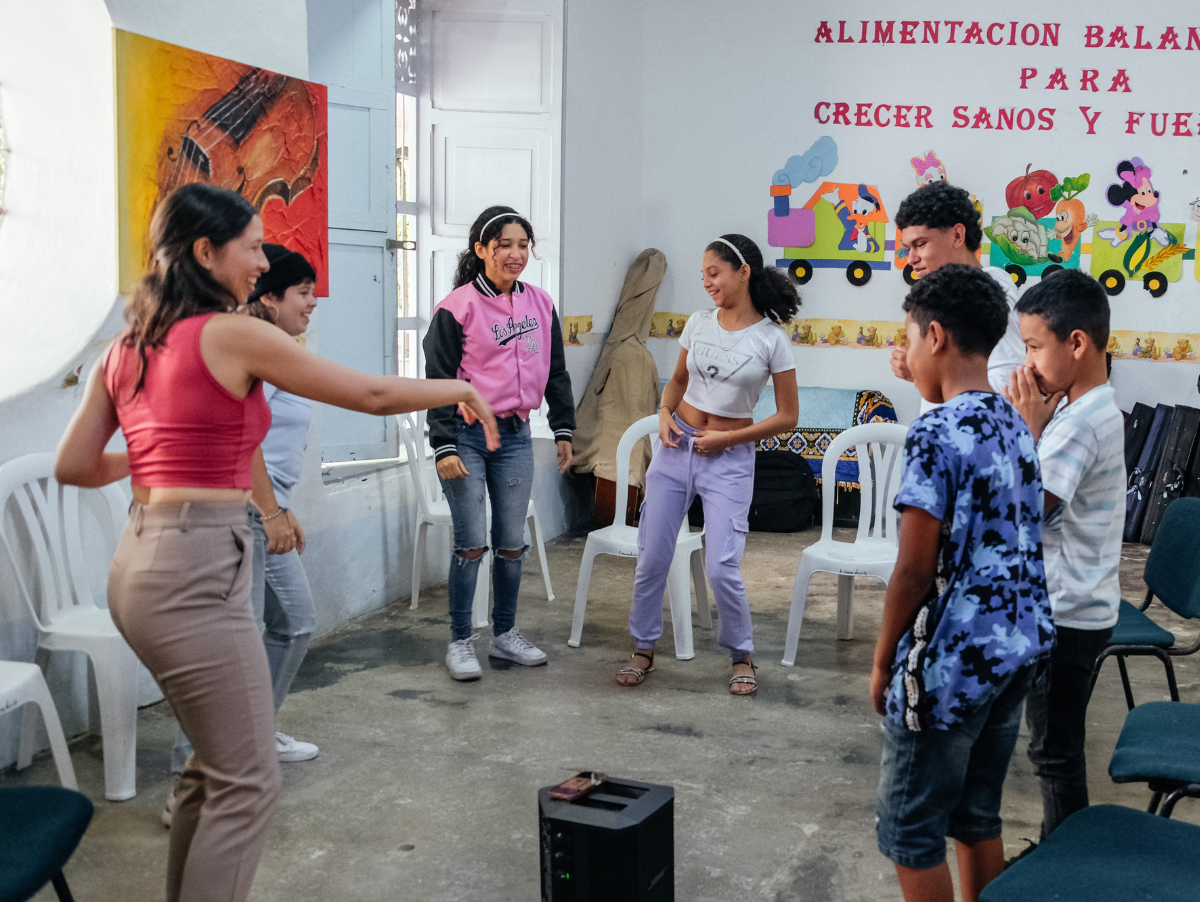
Community and long-term impact
With this expansive view of leadership, youth can become mentors, facilitators, advocates for mental wellbeing, and creative problem-solvers in their immediate surroundings. They can inspire and accompany others by becoming role models for the next generations: with the agency to achieve real systemic change.
How does it work?
Through education, access to dignified work opportunities, and the strengthening of emotional wellbeing, Amadeus participants develop tools to lead their lives with purpose, resilience, and a sense of community.
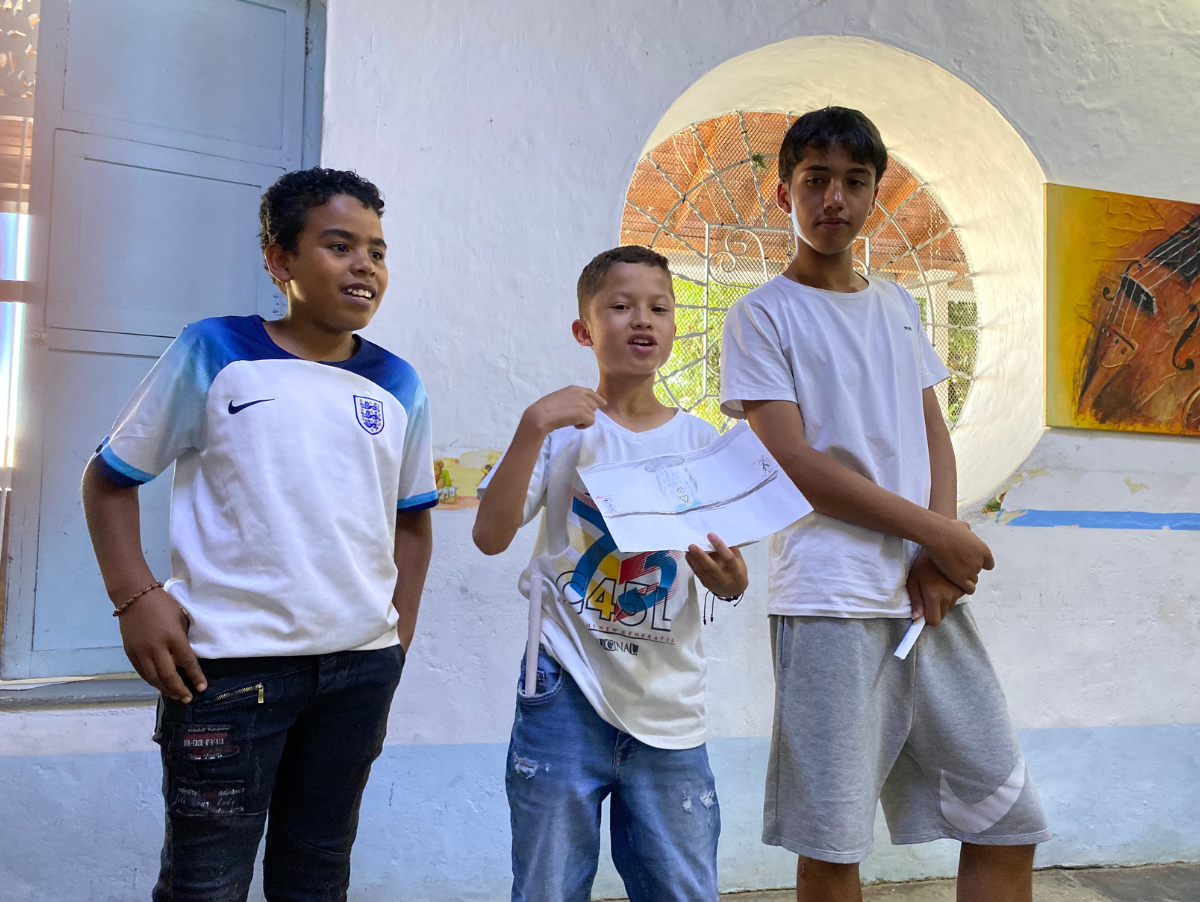
Activism is just one facet
The leadership style they are developing is deeply rooted in the community, which involves being a role model in everyday life, starting with oneself, fostering a supportive community, and creating sustainable change from within.

Leadership from within
In difficult circumstances, leadership begins with developing a more compassionate approach to their identity, internalizing helpful habits, and leveraging their creativity to design their own futures with the purpose of contributing to the society – regardless of the trade or profession they pursue.
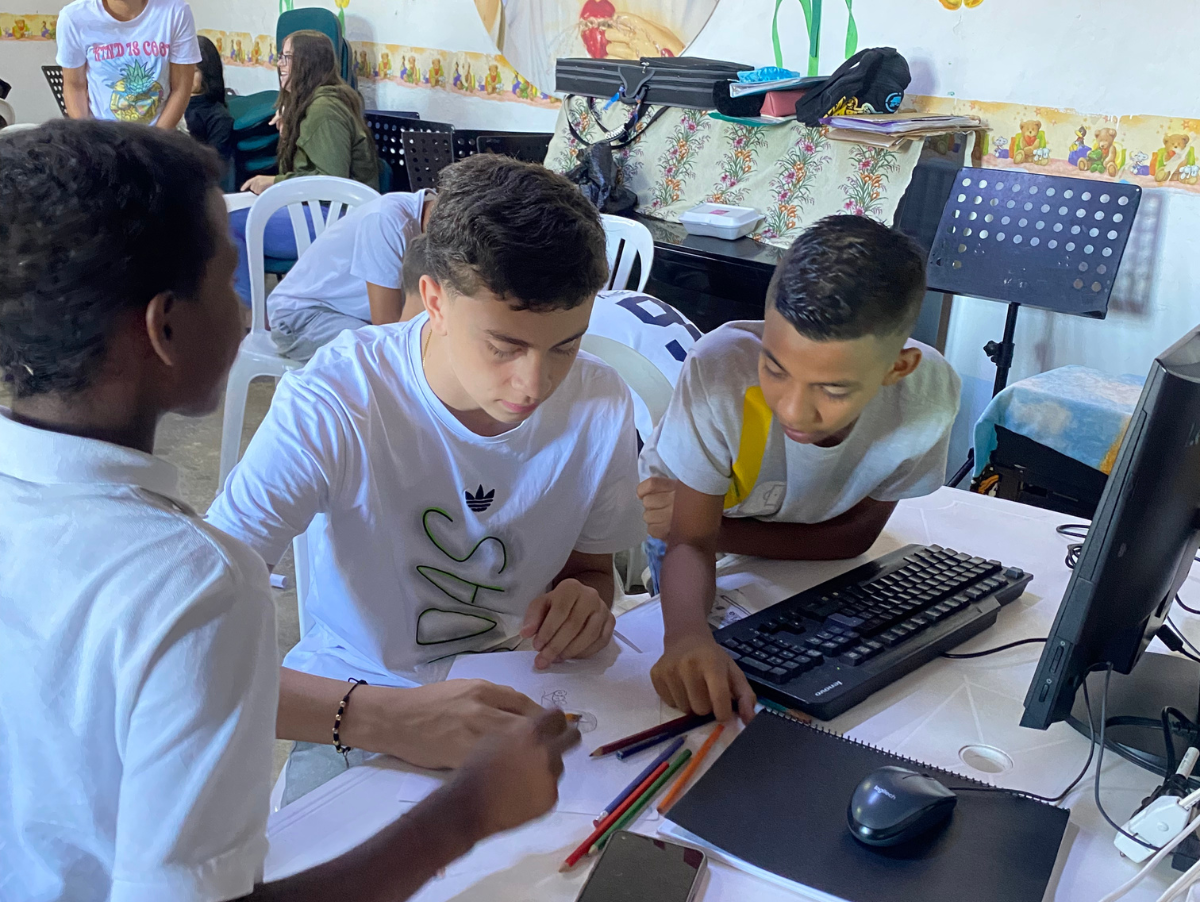
A daily choice
Whether they are organizing a demonstration, caring for their neighbor’s kids, attending a council meeting, or offering help in the wake of a crisis, the way a young leader shows up to these spaces reflects their internal response. The good news is that leadership is not only an identity or a collection of buzzwords but also a daily choice – a journey of becoming.

Community and long-term impact
With this expansive view of leadership, youth can become mentors, facilitators, advocates for mental wellbeing, and creative problem-solvers in their immediate surroundings. They can inspire and accompany others by becoming role models for the next generations: with the agency to achieve real systemic change.
Dive deeper into the model
Community-centered leadership as a reflection of our internal process
Distinguished from traditional leadership skills, a leader’s internal process is what enables them to effectively choose and adapt all other leadership actions. Known in the mental health field as “psychological flexibility,” this internal process expands a person’s ability to make values-driven choices, even in the presence of pain and hardship. Fostering leadership then becomes the transversal question: What kind of person do I want to become? And what do I need to achieve that version of myself?
Like a symphony, there are three key movements that can be applied to any moment in which the leader has a choice to make
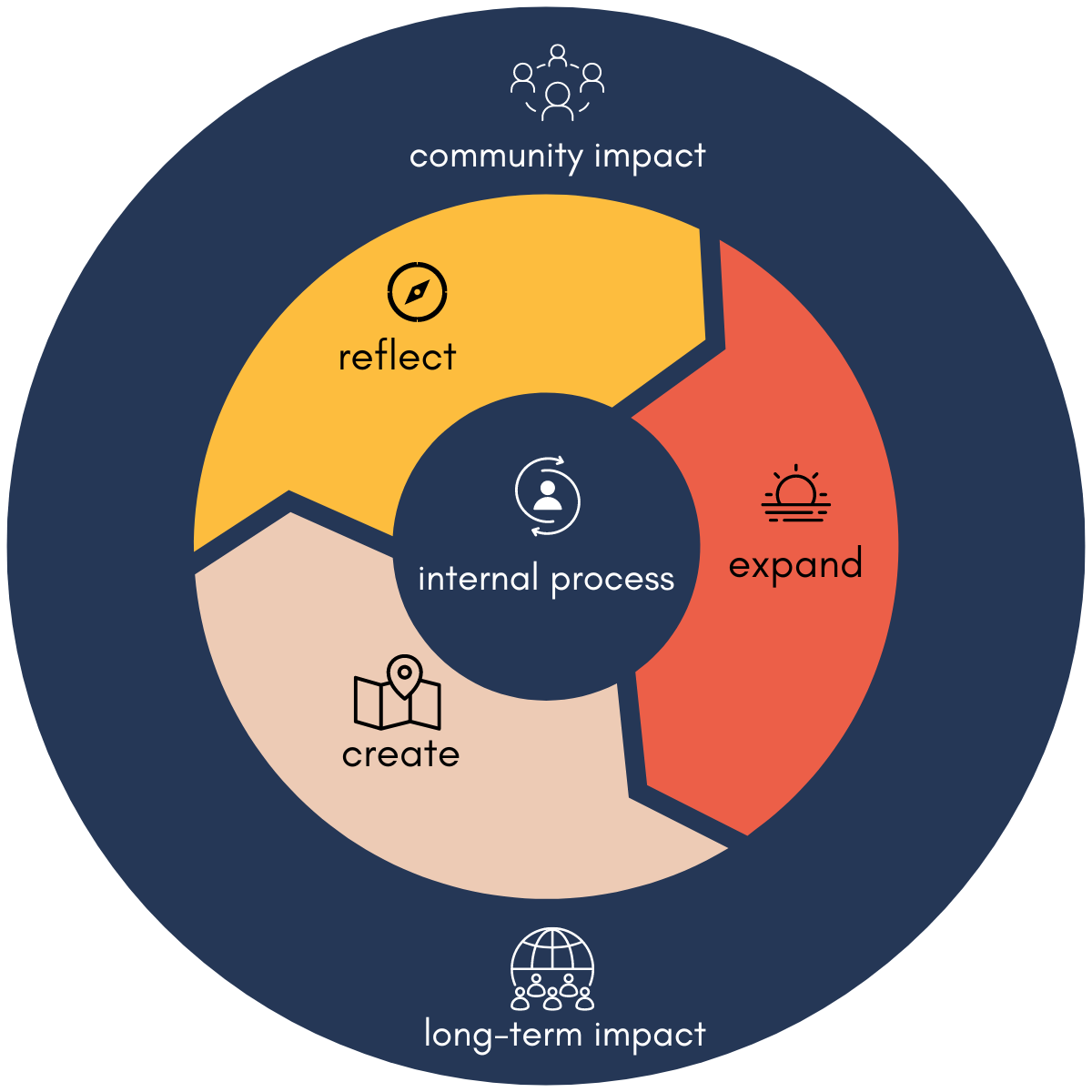
Reflect
Develop self-awareness, identify values, and reflect on experiences
We start with a pause, looking inside ourselves and around us, marking that moment before we respond. Practicing awareness, mapping out our lives, and telling our own story, we are paying deep attention to what’s happening and attuning to reality.
This focus on reflective processes includes listening deeply to ourselves and each other, identifying narratives that have taken up residence in our minds. We’re also learning to listen for our own values, and the values of others— what challenges have we faced and what gives us life? What do these experiences tell us about what really matters to us? How do we integrate these identified values into our sense of community and connection with others?
Expand
Explore new narratives, expand possibilities, and cultivate skills
Now that we have identified some of the narratives we have internalized, we get curious about where those narratives came from— and is there a different way to see myself and ourselves as a community? What has defined us that we want to be more open or flexible about?
This includes cultivating skills such as non-violent communication, design thinking, and imagining possibilities that are beyond what appears immediately available. As we expand our sense of choice and agency, we begin identifying the opportunities before us in which we can make a choice toward the values we identified in the first movement. How do we use all this awareness we are building, and the horizons we are expanding— in a way that prepares us to take action?
Create
Make thoughtful decisions and take actions based on identified values
This third phase is about making thoughtful decisions and taking actions that reflect the kind of person we want to become (values) and what we know our community needs (rootedness).
It could include change-making actions and behaviors at the granular level, such as habit-building, at the interpersonal level, such as guiding and mentorship, or at the systems level, such as identifying levels of change. How might we leverage the experiences that we have built up to this point, and apply the tools of leadership to make our next move in life?
Dive deeper into the model
Community-centered leadership as a reflection of our internal process
Distinguished from traditional leadership skills, a leader’s internal process is what enables them to effectively choose and adapt all other leadership actions. Known in the mental health field as “psychological flexibility,” this internal process expands a person’s ability to make values-driven choices, even in the presence of pain and hardship. Fostering leadership then becomes the transversal question: What kind of person do I want to become? And what do I need to achieve that version of myself?
Like a symphony, there are three key movements that can be applied to any moment in which the leader has a choice to make

Reflect
Develop self-awareness, identify values, and reflect on experiences
We start with a pause, looking inside ourselves and around us, marking that moment before we respond. Practicing awareness, mapping out our lives, and telling our own story, we are paying deep attention to what’s happening and attuning to reality.
This focus on reflective processes includes listening deeply to ourselves and each other, identifying narratives that have taken up residence in our minds. We’re also learning to listen for our own values, and the values of others— what challenges have we faced and what gives us life? What do these experiences tell us about what really matters to us? How do we integrate these identified values into our sense of community and connection with others?
Expand
Explore new narratives, expand possibilities, and cultivate skills
Now that we have identified some of the narratives we have internalized, we get curious about where those narratives came from— and is there a different way to see myself and ourselves as a community? What has defined us that we want to be more open or flexible about?
This includes cultivating skills such as non-violent communication, design thinking, and imagining possibilities that are beyond what appears immediately available. As we expand our sense of choice and agency, we begin identifying the opportunities before us in which we can make a choice toward the values we identified in the first movement. How do we use all this awareness we are building, and the horizons we are expanding— in a way that prepares us to take action?
Create
Make thoughtful decisions and take actions based on identified values
This third phase is about making thoughtful decisions and taking actions that reflect the kind of person we want to become (values) and what we know our community needs (rootedness).
It could include change-making actions and behaviors at the granular level, such as habit-building, at the interpersonal level, such as guiding and mentorship, or at the systems level, such as identifying levels of change. How might we leverage the experiences that we have built up to this point, and apply the tools of leadership to make our next move in life?



